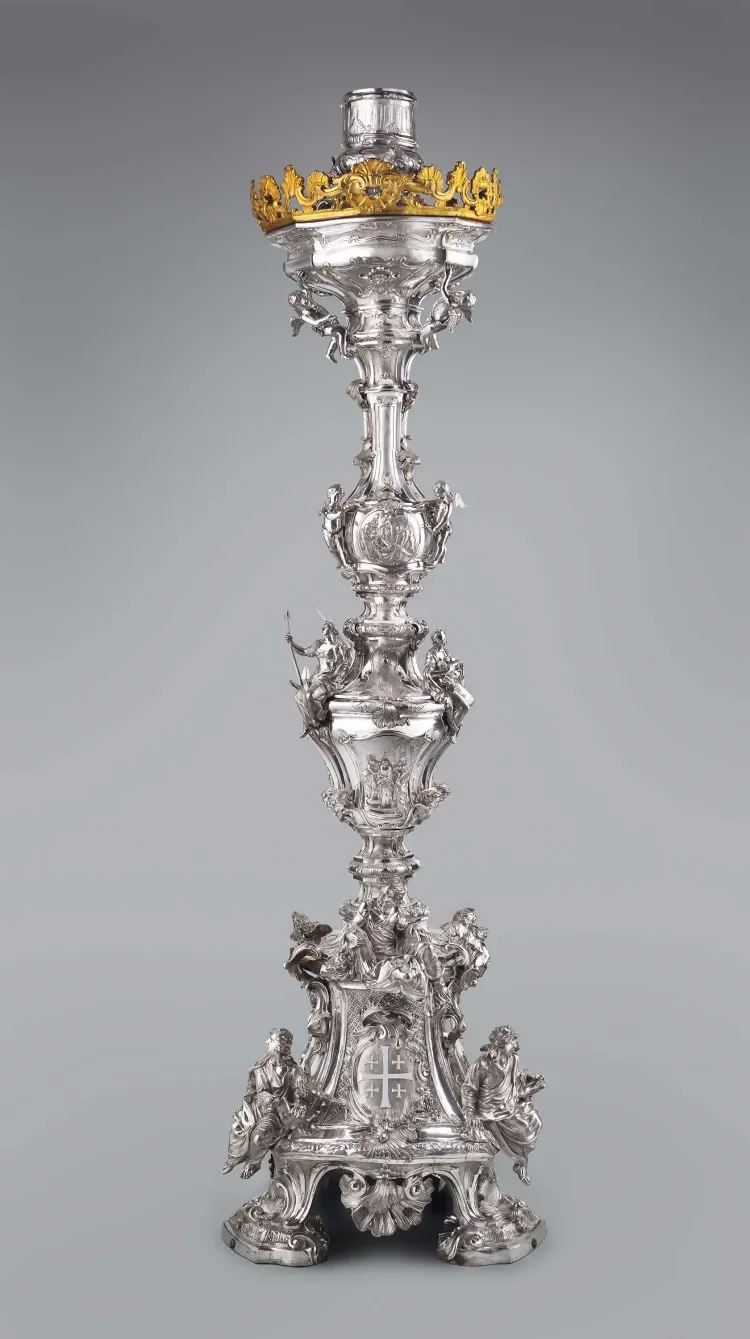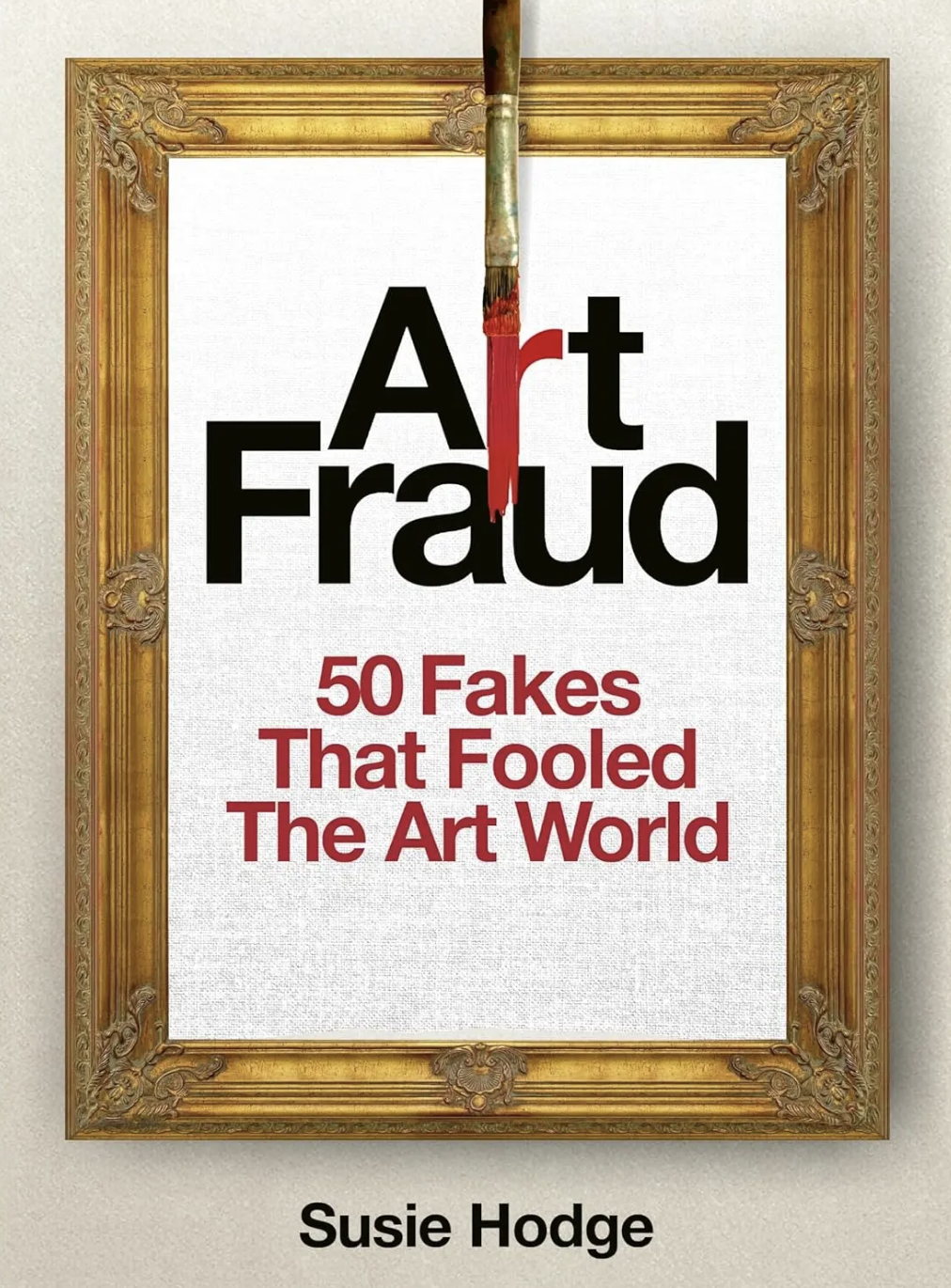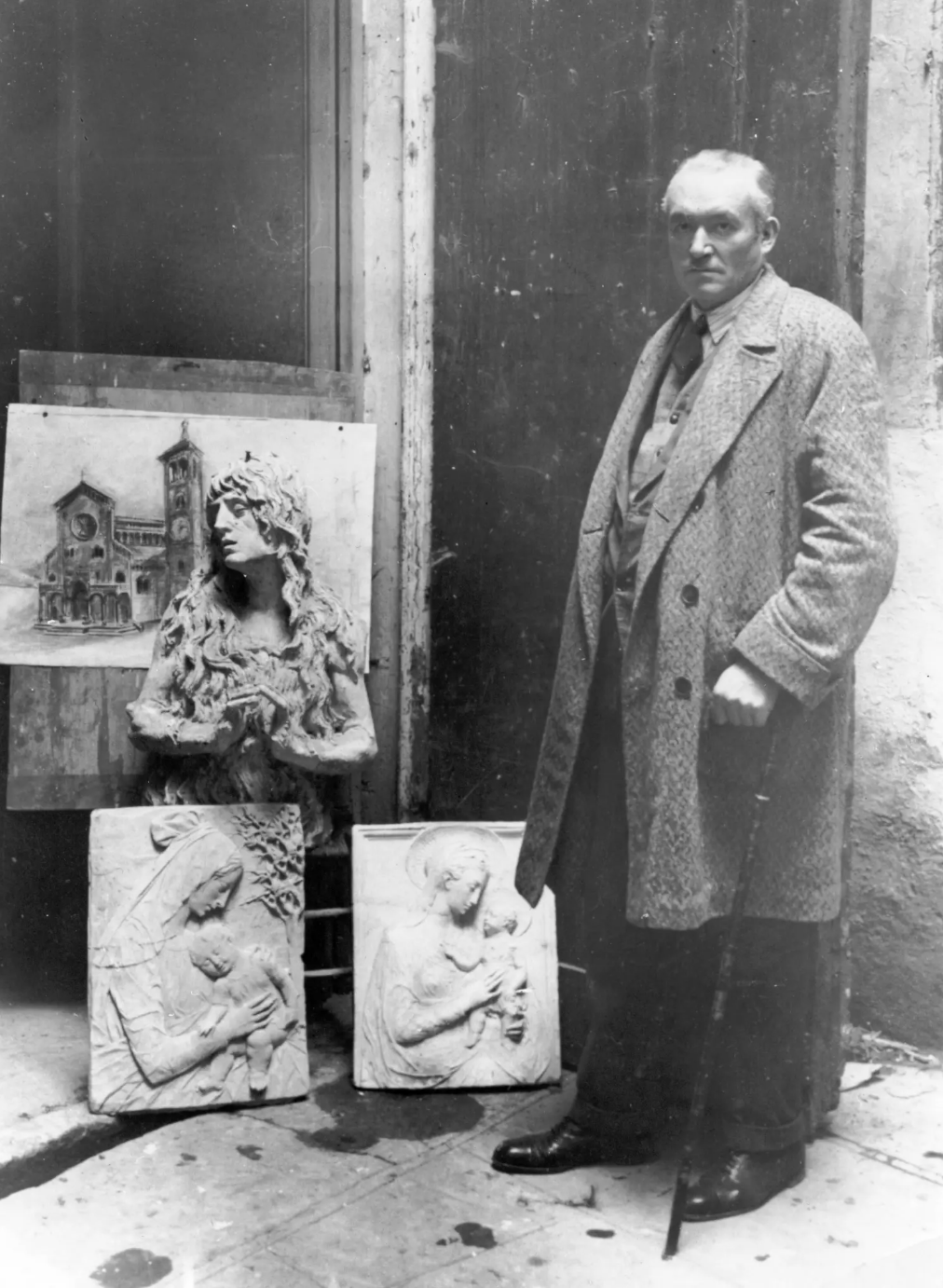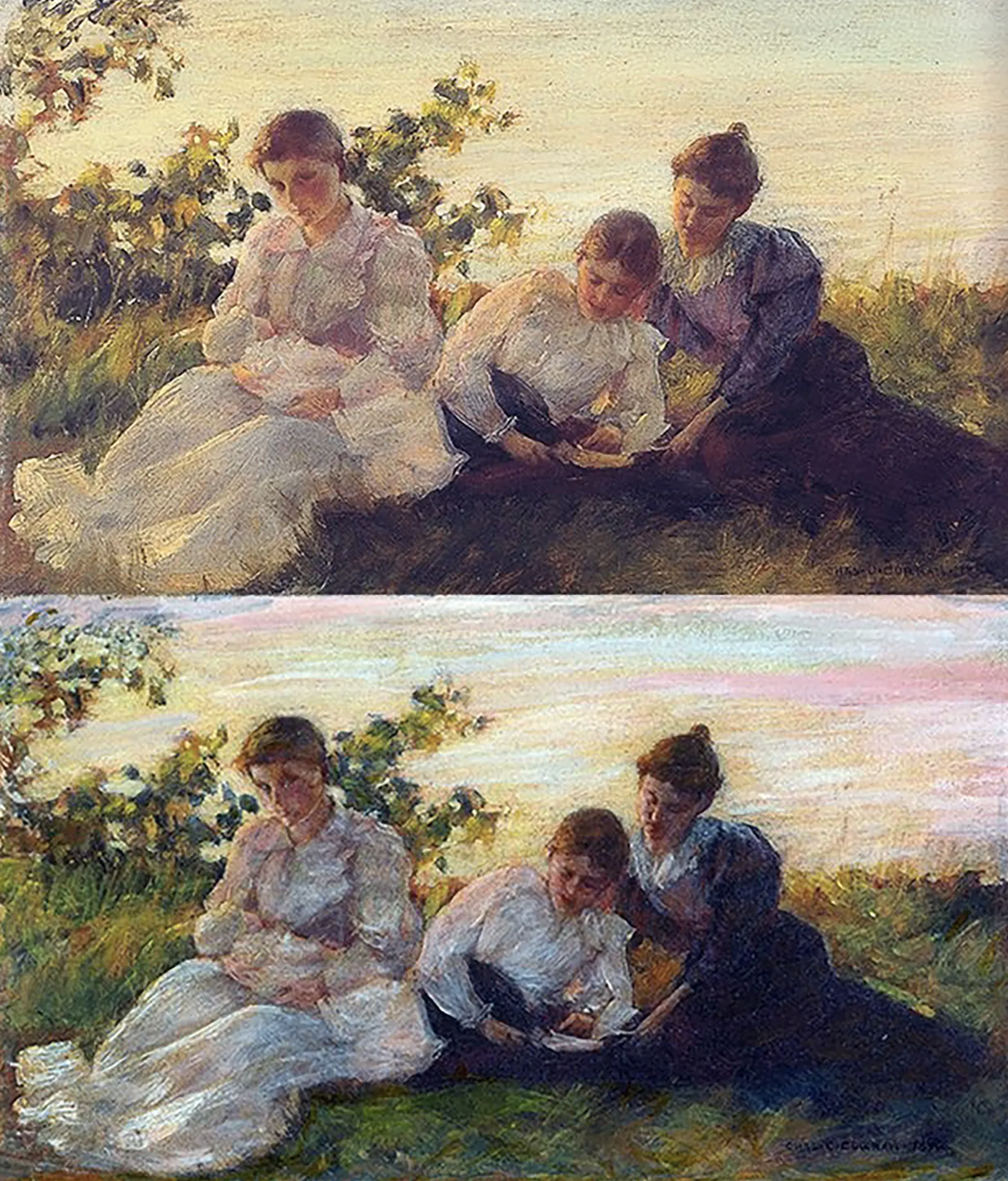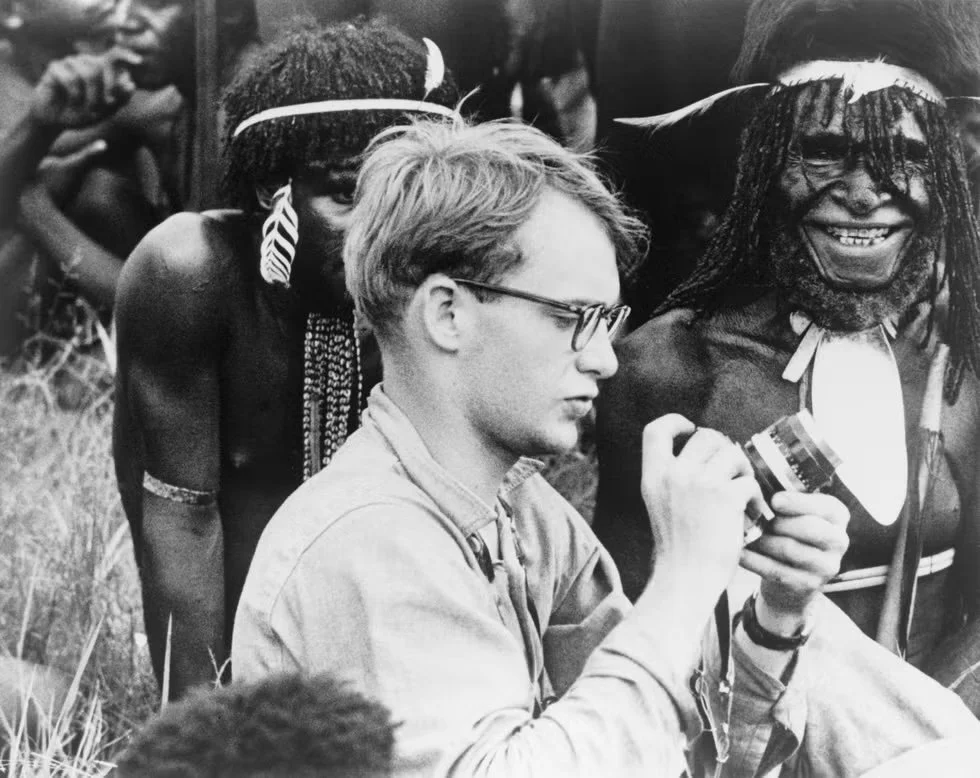THE NEW CRITERION, November 2025
On “To the Holy Sepulcher: Treasures from the Terra Sancta Museum,” at the Frick Collection.
Among the many miracles to come from Jerusalem, “To the Holy Sepulcher: Treasures from the Terra Sancta Museum,” now on view at the Frick Collection, is the latest revelation.1 The wonders of the works on display, with some sixty-eight individual pieces, are only outshone by the tales of their survival and the connections these treasures maintain to that singular place.
Since its rediscovery in the fourth century A.D., the location of Jesus’s tomb—the Holy Sepulcher—has been the most important pilgrimage site in Christendom. In the seventeenth and eighteenth centuries, at a time when European monarchs could not visit the Holy Land, then under Ottoman rule, the courts of Europe sent treasures to the church built over the tomb for use in rituals and veneration. “To the Holy Sepulcher” represents the first pilgrimage of these objects stateside. The exhibition is the result of an unprecedented loan from the Custody of the Holy Land, the Franciscan division charged since A.D. 1309 with protecting the Roman Catholic treasures in Jerusalem and beyond. The American tour anticipates the opening of the Terra Sancta Museum, a Franciscan facility now under construction at the Monastery of Saint Saviour, by Jerusalem’s New Gate, designed to safeguard and display these objects back home.
The astonishing history of these treasures is made all the more remarkable by their appearance in New York. As the Holy Land comes to Fifth Avenue, we must thank Xavier F. Salomon, the Frick’s deputy director and chief curator. He organized this exhibition after first learning about the Terra Sancta Museum a few years ago, with the help of Jacques Charles-Gaffiot and Benoît Constensoux of the Terra Sancta Museum’s scientific committee. The exhibition marks this young curator’s final effort at the Frick before his departure for the Calouste Gulbenkian Museum in Lisbon, Portugal, where he is the incoming director. For a scholar so invested in both the fine and decorative arts of Europe, “To the Holy Sepulcher,” we might say, is a fitting swan song of Salomon.
The exhibition leads off with the one item here actually created in the Holy Land: a model of the Church of the Holy Sepulcher itself, crafted in the eighteenth century. Be sure not to miss it just outside the gallery entrance; on the day I visited, it was not easy to double back. Carved in Bethlehem of local olive and pistachio wood, mother-of-pearl from the shells of the Red Sea, and camel bone, the dollhouse-like assembly was created to be a gift for Europeans from the Franciscans—a memento from rather than for the Holy Sepulcher. The jeweled model reminds us of all this footprint contains and how this church has come down to us through time.
Look up this church in the index of Jerusalem, Simon Sebag Montefiore’s recent history of the city, and the subcategories give some indication of the site’s vicissitudes:
Church of the Holy Sepulchre: and Arab conquests . . . construction by Empress Helena . . . and Crusades . . . daily rituals . . . and Descent of the Holy Fire . . . destruction by fire . . . Fatimid destruction . . . latrines . . . and Mongol raids . . . and Napoleonic invasion . . . Persian destruction . . . and religious conflict . . . and Tartar conquest . . . and Turkish conquests . . .
The layout of the Church of the Holy Sepulcher is far different from the grand vision of the Vatican or what one might expect from this axis mundi of Christianity (there is, in fact, a spot in the church marking the very axis point). A concatenation of surprisingly small Romanesque buildings, all of which were built, burned, and reconstructed over various periods, the church has been a site of veneration, speculation, and contention for two millennia—and is made all the more wondrous in its strangeness. No two of the extant floor plans of this church look exactly alike. It is easy to get turned around among its domes and passages, its priests and pilgrims. Make a left turn at the Chapel of Adam, where the blood of Christ ran through Adam’s skull; go past the Stone of Unction, where the body of Christ was cleaned before burial and which pilgrims now rub down with oil; and you might come across a wall of medieval graffiti carved to collect its holy dust.
Robert Landry, Reliquary of the True Cross, 1628–29, Gilt silver and glass, Terra Sancta Museum, Jerusalem.
Today the church is located within the Old City, a short walk from the Temple Mount through narrow, winding streets of Jerusalem stone, and is little changed from that eighteenth-century model. In the time of Jesus, the tomb was part of a sloped cemetery that existed just outside the city walls. Following Titus’s destruction of Jerusalem in A.D. 70, Hadrian recast the city as Aelia Capitolina in A.D. 130. Even by then, the tomb had become a site of veneration for the earliest Christians. Hoping to redirect their attention to the Roman gods, Hadrian walled off the tomb, flattened the site, and constructed a temple to Venus in its stead. Nevertheless, the memory of the location endured. Two centuries on, as Rome accepted Christianity with the Edict of Milan, Helena of Constantinople—mother to Emperor Constantine, and Saint Helena to Christians—traveled to Jerusalem and reopened the tomb in 326; her son dedicated the new church on its site in 335. In a nearby well, Helena also discovered pieces of what she believed to be the True Cross. The site of the Crucifixion, known as Calvary Hill or Golgotha, is just 150 feet from the tomb and was soon incorporated in the church grounds.
Regarding the tomb’s history, Evelyn Waugh wrote in his introduction to Helena, his historical novel of 1950, that
if we do accept its authenticity we must, I think, allow an element of the miraculous in its discovery and identification. We do know that most of the relics of the True Cross now venerated in various places have a clear descent from the relic venerated in the first half of the fourth century. It used to be believed by the vulgar that there were enough pieces of this “true cross” to build a battleship.
Much as Waugh encountered them, today the tomb, Calvary Hill, and Helena’s well—in addition to archaeological evidence of Hadrian’s Temple of Venus—are all connected under one roof within the warren of buildings that comprise the Church of the Holy Sepulcher. Making this real estate even more complex—and explaining its general appearance of deferred maintenance—the Roman Catholic, Greek Orthodox, Armenian, Coptic, Syrian, and Ethiopian churches all share in the church’s administration under an arrangement reached in 1757, in the days of the sultan, known as the Status Quo.
“To the Holy Sepulcher” is made up of a selection of precious objects used by the Latin church in its annual rituals around the site and in other places under its protection in the Holy Land. Only recently have these objects been, like the tomb itself in Helena’s day, brought to the light—in this case, after the Cuban Italian scholar Alvar González-Palacios began researching them in the 1980s and exposing them to the greater museum world (his fascinating story gets its due in the exhibition’s lavish catalogue, which also features updated photographs of these freshly cleaned treasures).
Before then, as the Franciscan custodians tell it, these treasures were hidden in plain sight—brought out for special ceremonies but otherwise squirreled away in closets and storerooms, miraculously safe from looting, vandalism, and whatever authority was ruling Jerusalem at any given time. In fact, the greatest threat to such treasures has come from intrachurch rivalry. A sanctuary lamp (ca. 1758–59) of gold and gilt silver attributed to Johann Caspar Kriedemann, showing reliefs of episodes from the life of Christ, was most likely created from the gold of earlier Latin treasure that had been destroyed by the Greek clergy in an attack on the eve of Palm Sunday in 1757. The same goes for the pair of torchères from 1762, remade in Venice by the workshop known as al San Lorenzo Giustinian from the 1,304 ounces of silver recovered by the Franciscans from those destroyed and stolen treasures.
Al San Lorenzo Giustinian Workshop, Torchère, 1762, Silver and gilt silver, Terra Sancta Museum, Jerusalem.
Nevertheless, despite the challenges faced by the church and city, the many treasures in Franciscan custody at the Holy Sepulcher have fared far better than their counterparts in Europe. “To the Holy Sepulcher” contains examples of European metalwork that are otherwise no longer extant—melted down long ago for their raw materials. The sections of the exhibition are therefore divided by region of origin, denoting the French, Iberian, and Germanic sources of these gifts given by European monarchs to Franciscan emissaries for delivery to and use in the Holy Land.
It is, after all, the continuous liturgical function of these ritual objects that has defined their design and sustained them. “Their survival over the centuries is a direct result of their continued use,” says Salomon. As the outgoing director of the cultural heritage office at the Custody of the Holy Land, Friar Stéphane Milovitch explained at the Frick opening, “If the Ottomans knew we had all these kinds of things, they would have liked to take it. So during many centuries we use and we hide—but we used.”
To understand such metalwork and textile, it helps to envision it carried, elevated, illuminated, and worn. At the opening, I met one friar looking at the subtle wear on a section of fleurs-de-lys on a crozier (1654–55) created by Nicolas Dolin. He wanted to see just where the bishops grasped this imposing pastoral staff of gilt silver, glass, and semi-precious stones, made in Paris and given to the Franciscans by Louis XIV.
Nicolas Dolin, Chalice, 1661–63, Gilt silver, glass, and semi-precious stone, Terra Santa Museum, Jerusalem.
A special alchemy takes place when such treasures of sculptural relief, created from metal and stone, are held in the lamplit liturgies of the church. Objects such as Dolin’s chalice and paten (1661–63) and Jean Hubé’s ciborium (1668–69) are so finely detailed, with minuscule images from the life of Christ alongside symbols of the holy ancestors of the French kings, that these messages are more intended to be felt than seen. While European monarchs could not travel to Jerusalem in person, their presence was conveyed to the holy altars through the symbolism preserved in these finely wrought materials.
To encounter such objects in a museum setting is therefore a trade-off. Salomon has done what he can to reproduce an altarlike feel in some of these displays, with vested mannequins arranged among the treasures. Nevertheless, we experience them as never intended, not in candlelit glimpses but in close-up stares. Ornate objects such as a solid-gold Neapolitan monstrance of 1746, Antonio de Laurentiis’s throne of Eucharistic exposition of 1754, and a Neapolitan crucifix of gold and lapis lazuli of 1756 are just about too much to take in under the light of the Frick’s spare new special-exhibition space. The same goes for Robert Landry’s reliquary of the true cross (1628–29), containing at its center a fragment of Helena’s fourth-century find.
As an exhibition of holy objects, “To the Holy Sepulcher” ultimately tells us little about the liturgical role of these materials back in Jerusalem. As a display of European metalwork and textile design, however, the show connects us to relics of the European past as never before. This connection is not lost on the Franciscan custodians of these works, who rightly see American institutions such as the Frick as upholding the legacy of Christian Europe even in a post-Christian, post-European age. Today, these treasures speak to the resurrection of Western culture as much as the Resurrection from that Jerusalem tomb. In either context, they represent singular objects of faith.
“To the Holy Sepulcher: Treasures from the Terra Sancta Museum” opened at the Frick Collection, New York, on October 2, 2025, and remains on view through January 5, 2026. The exhibition will also be seen at the Kimbell Art Museum, Fort Worth (March 15–June 28, 2026.

